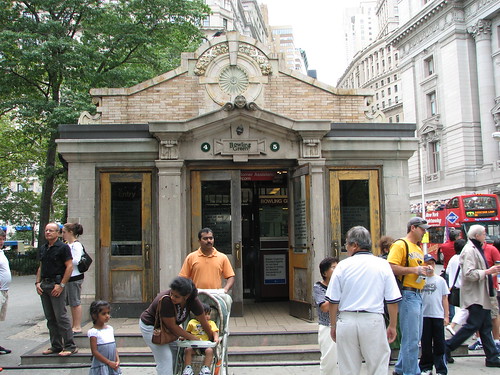
Wave Hill is a public garden in the Bronx, with sweeping views of the Hudson River and the Palisades. They have gardens: aquatic garden, herb and flower garden, pergola and Abrons woodland. The also have a several gallery spaces and an artist-in-residence program dedicated to exhibiting contemporary art that explores nature. On view now is "Tending Toward the Untamed: Artists Respond to the Wild Garden"
http://www.wavehill.org/arts
Storm King Art Center is a 500 acre outdoor sculpture park located just 50 miles north of Manhattan. It includes sculptures by revered artists of our times including: Lynda Benglis, Louise Bourgeois, Henry Moore and Ursula von Rydingsvard, to name but a few.
http://www.stormking.org/about/ Mark diSuvero (left)
For those New Yorkers who enjoy the thrill of the chase, discover a hidden gem right under your nose! Only open to the public Saturdays, Sundays and holiday Mondays, hop on a ferry, and head over to Governor's Island to check out their special programming.
In August, check out a day of 1920s-themed dancing, drinking, games and picnicking. Michael Arenella and his Dreamland Orchestra will be providing period-appropriate music all weekend long, and costumes are encouraged. Jazz Age Lawn Party Saturday and Sunday August 18-19 11 a.m. to 5 p.m., tickets $15 in advance. And look forward to the Governors Island Art Fair every weekend in September featuring over 100 independent artists and a selection of galleries. More info here: http://www.4heads.org/
If you want to get out of the city, but still stay cool inside, you will find a treasure trove of early video art at the Dia: Beacon, only 60 miles north of Manhattan, in the show titled, "Circa 1971: Early Video & Film from the EAI Archive" featuring seminal work from artists including: Gordon Matta Clark, Eleanor Antin and Joan Jonas. Or walk the grounds on July 14, by taking part in the educational tour "Reclaiming Nature through Art" examining the work of artists: Walter DeMaria, Robert Smithson, Joseph Beuys. Of course, the Dia: Beacon is packed full of amazing work, for more information: http://www.diacenter.org



















































